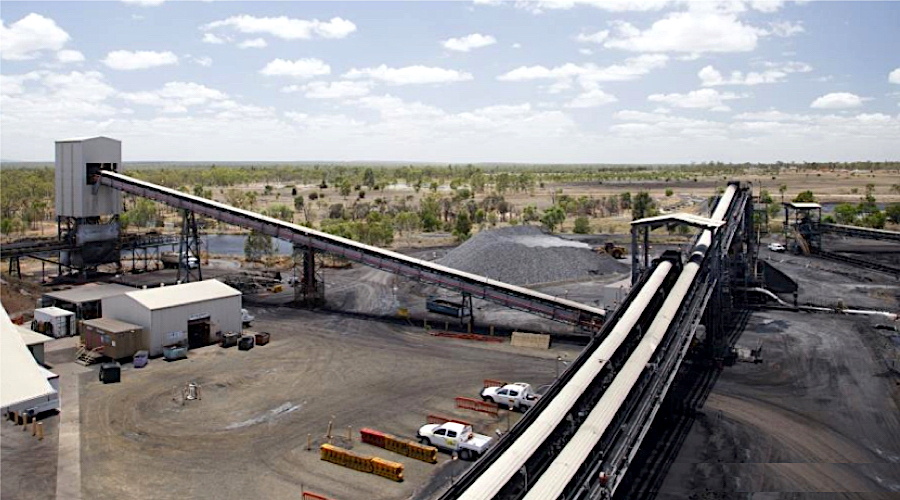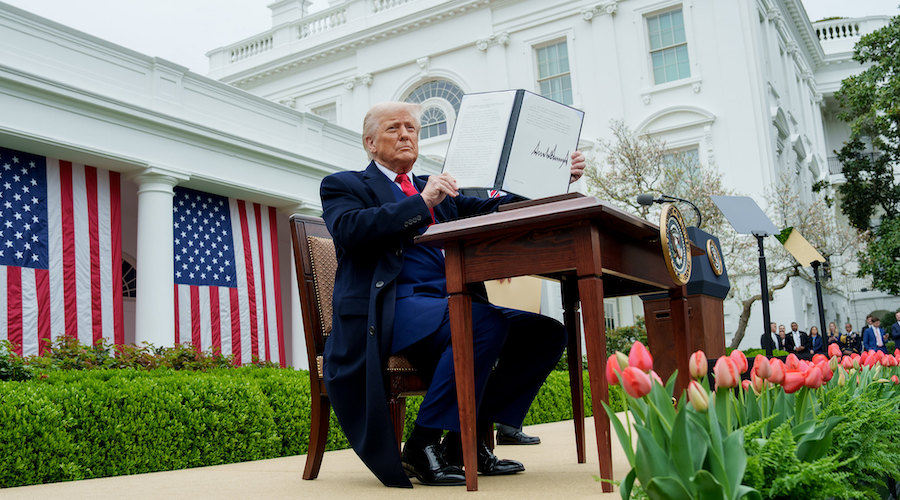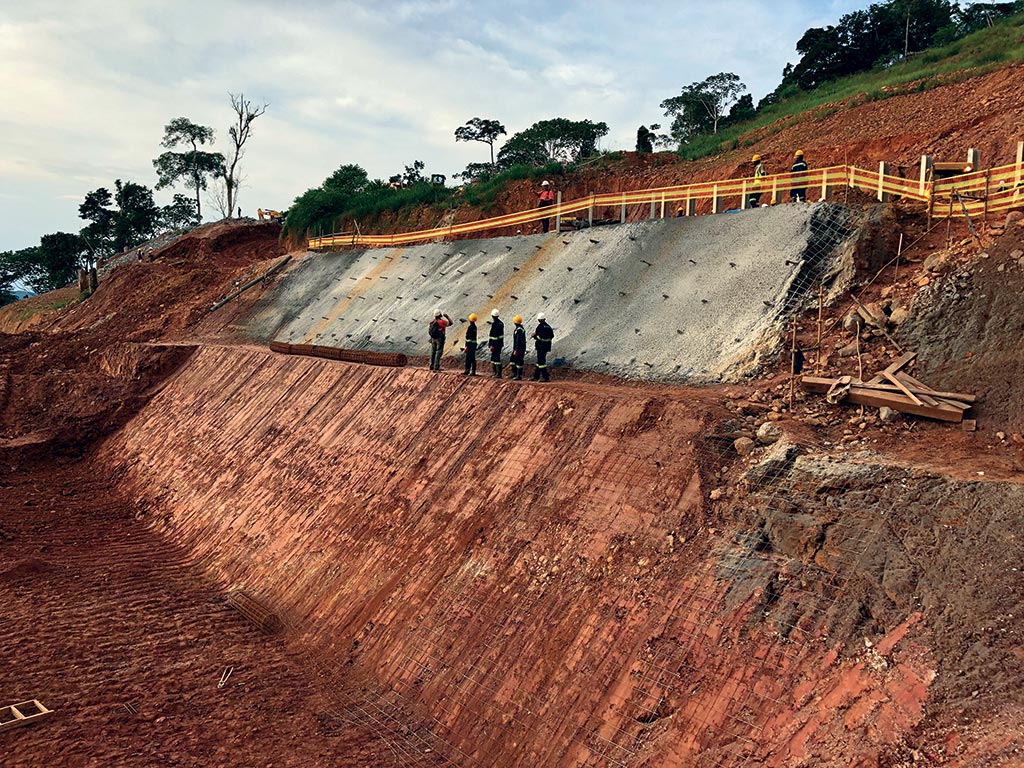Copper miner’s $10B bet comes to life in Panama jungle
The world’s largest new copper mine rumbled to a start this week in the Panamanian jungle, poised to supply a global market that’s tipping into deficit and gives First Quantum Minerals Ltd. a chance to prove its $10 billion investment was worth all the trouble.
Cobre Panama, a vast mining and processing complex near Panama’s Atlantic coast, processed its first ore on Monday, a half century after the deposit was discovered. At full production in 2021, it will turn Vancouver-based First Quantum into a top copper producer alongside giants like Freeport-McMoRan Inc. and BHP Group.
It’s been a long time coming. For 50 years the deposit had remained tantalizingly but steadfastly out of reach.
For Panama, it’s the biggest investment ever outside the canal and makes the Central American country a key supplier to a copper market facing labor unrest and governments grasping for greater takes. The $6.3 billion project will be able to ship its concentrate, thanks to the Panama Canal, to just about any smelter in the world.
“This establishes a new jurisdiction for mining,” Tristan Pascall, the project’s general manager, said in an interview at the facility shortly before the first ore passed through its mills. “There aren’t many projects coming on.”
Past failures
It’s been a long time coming. For 50 years the deposit had remained tantalizingly but steadfastly out of reach.
“Possibly vast beds could rival Panama Canal as economic asset to country,” the Star & Herald, a local English-language newspaper, trumpeted on the front page of its May 1, 1968 edition after a United Nations survey team discovered the deposit.
Past attempts to develop it all met with failure. The terrain undulates like an egg carton — impossible to navigate for colossal mining equipment. When it rains, as it often does, the soil turns into a maddening toothpaste-like clay. A Japanese consortium of seven companies and Teck Resources Ltd. abandoned it. In 2013, First Quantum took it on after a C$5 billion ($3.8 billion) takeover of Canadian rival Inmet Mining Corp., which had spent two decades on the project with little to show for it. Most in the mining industry had written off Cobre Panama.
‘Too-hard box’
“It was a project that all the major mining companies had put in the too-hard box,” says Clive Newall, co-founder and president of First Quantum.
It seems they were wrong.
In the six years since, the Canadian miner has managed to level the daunting terrain, at times filling in trenches 60 meters deep. It built a deep-water port where mining trucks the size of a suburban house can roll in fully assembled off ships. It built a coal-fired power plant and Panama’s third road connecting the Atlantic and Pacific Oceans.
Kjell Anzelius, 85, the only surviving member of the original U.N. survey team, began seeing stories about the mine in the news last year. When he realized that the deposit he’d helped discover was on the cusp of production, he hopped on a plane from his home in Sweden.

Debt concerns
“It took me two days to find them,” he said of the First Quantum office in Panama City. But once he met the country manager, he found himself on a helicopter ride to the site where once impenetrable jungle he’d hacked with a chainsaw had been converted into a state-of-the-art complex.
“I’m more surprised than anything else,” he said by phone from Sweden. “I always had a feeling it would cost too much money to establish a mine there.”
It’s a remarkable milestone for a company that less than three years ago had more debt trading at distressed levels than any other metal or mining company. First Quantum expects Cobre Panama to produce 150,000 tons this year and ramp up to as much as 350,000 in 2021. That would bring its global production (including other mines in Zambia, Turkey, Mauritania and Finland) to about 900,000 tons per year.
“Every company’s preferred route is to start relatively small, but this one, you needed scale out of the gate.”
“They have a very attractive portfolio of assets,” says Bloomberg Intelligence analyst Richard Bourke, noting the company’s enterprise value of $15 billion doesn’t yet reflect that a $6 billion project is starting up. “Seven, eight years ago, at the start of the super cycle, people were spending a lot more for assets that were definitely more speculative than this one.”
‘Needed scale’
First Quantum’s approach at Cobre Panama (cobre is Spanish for copper) has been an all-in bet. In part, that’s because the deposit’s low grade meant it couldn’t be developed more cautiously piecemeal. “Every company’s preferred route is to start relatively small,” Newall said. “But this one, you needed scale out of the gate.”
The company built the world’s biggest processing complex in a single location, which will ramp up to a capacity of 85 million tons a year. It’s spending more upfront on costly electrification, calculating that over the 40-year project life, it’ll recoup the investment in savings: the massive trucks used to haul rock uphill normally consume 400 liters an hour of diesel. Yet hitched to an electric trolley system like an urban streetcar, each will use only 40 liters an hour at double the speed, and require 30 percent less maintenance, Pascall says.
Trade tensions
Those are long-term calculations that dispense with short-term uncertainties — of which the company faces several. First Quantum still shoulders a hefty debt burden after nearly defaulting on loans in 2016. It’s locked in a $7.9 billion tax dispute with the government in Zambia. The company’s share price is still down more than 50 percent from its 2011 peak.
More broadly, U.S.-China trade tensions threaten to upend copper’s otherwise bullish outlook. While the metal’s fundamentals are strong — inventories are near their lowest since January 2015 and the pipeline of projects is at its weakest in decades, according to Wood Mackenzie — a trade war could depress industrial activity and the demand for copper.
Any disruption to Cobre Panama’s output could deepen supply shortages. CRU Group analyst Robert Edwards estimated in November that global production will trail consumption by over 200,000 tons in 2021 and the deficit could widen to more than 300,000 tons by 2023.
‘Difficult place’
“The world is a difficult place right now,” Newall says. The company is hedging its copper production until Cobre Panama reaches full production. “Three years ago, we probably would not have been hedging — we’d be quite confident that the world would keep spinning on the same axis around the sun.”
(By Natalie Obiko Pearson)
More News
Peabody Energy reviewing options related to deal with Anglo American
Last year, Anglo American agreed to sell some of its Australian steelmaking coal mines to Peabody for $3.78 billion in cash.
April 08, 2025 | 03:29 pm
Trump signs executive order to help revive dying coal sector
US president also instructed the Interior Department to locate coal deposits on federal lands, remove barriers to mining, and fast-track leasing processes.
April 08, 2025 | 02:32 pm
US envoy sees Alphamin reopening Congo tin mine as rebels depart
Alphamin halted mining last month at its Bisie mine to protect its employees as M23 rebels neared the site.
April 08, 2025 | 01:51 pm
{{ commodity.name }}
{{ post.title }}
{{ post.excerpt }}
{{ post.date }}




Comments